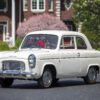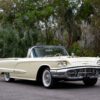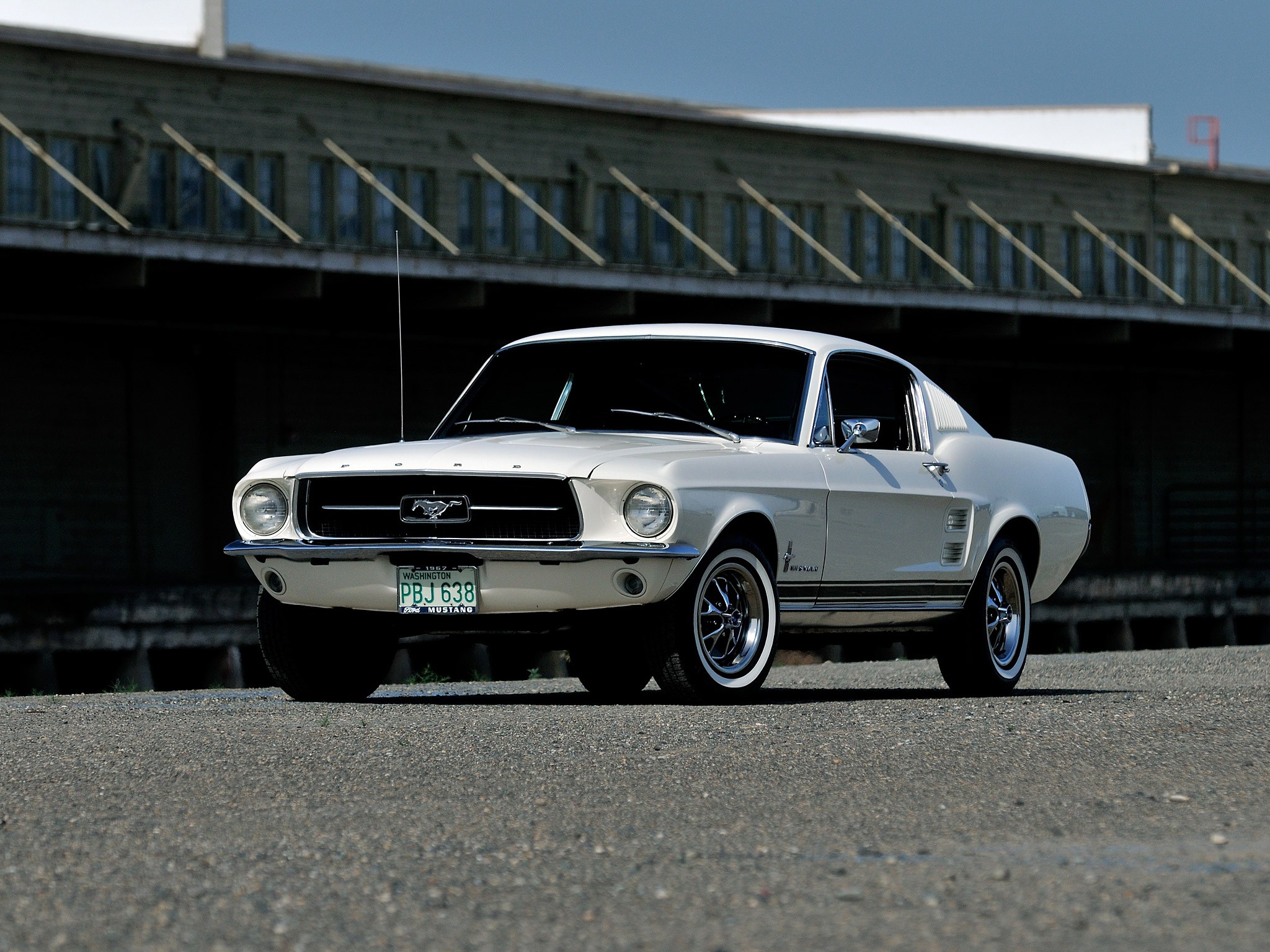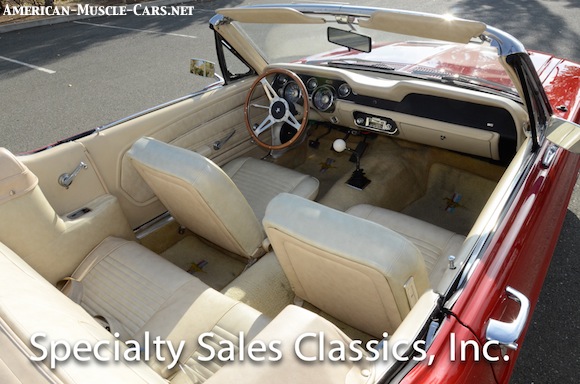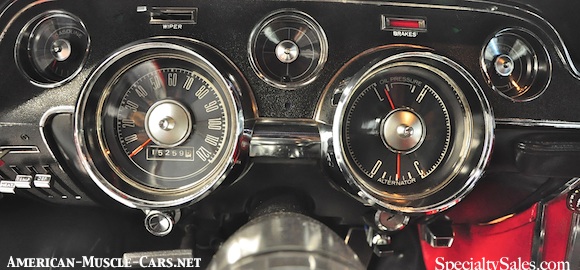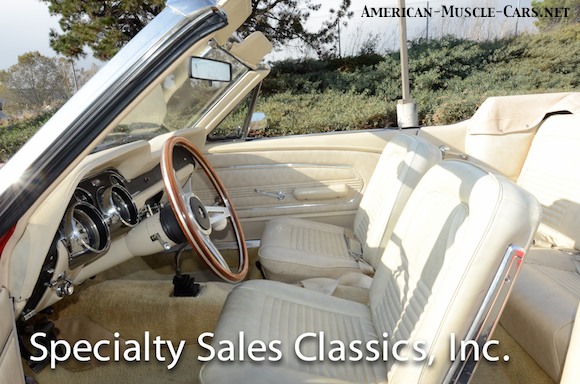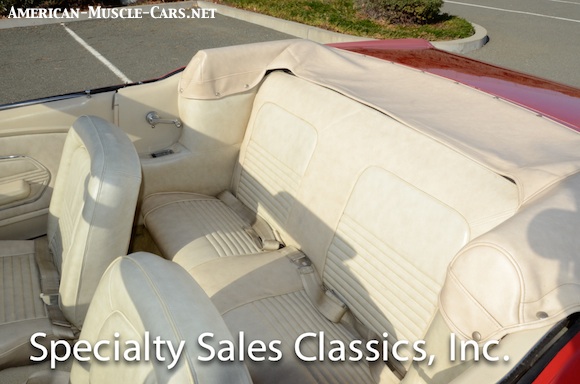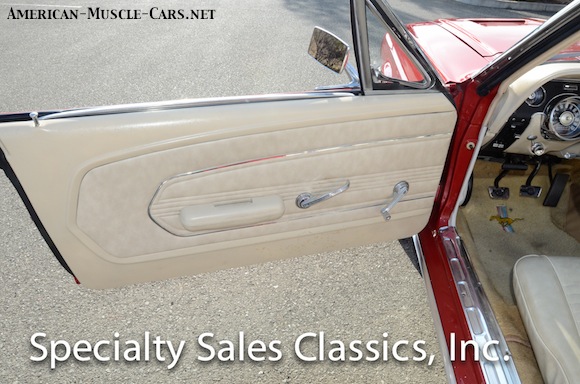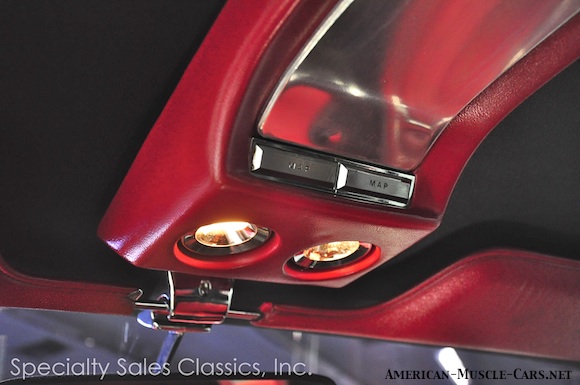1967 Ford Mustang

1967 FORD MUSTANG EVOLVES
After 2 amazing years all by itself without any direct competition, the Mustang was about to be joined by a pair of new rivals in the Chevy Camaro and the Pontiac Firebird. Ford saw it coming by 1965, but had no idea what to expect from GM when it signed off on the final design for the first reskin for model year-1967. After just 2 years, the Mustang had grown familiar, and with well over a million sales in the first 2 years, it was no surprise. Ford opted to keep the new Mustang’s styling similar to the car it replaced. The new car was definitely a Mustang, but fuller, rounder, and more mature.
1967 Ford Mustang HARDTOP
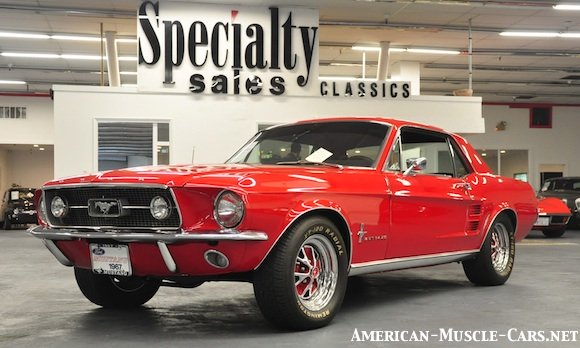
CHANGES FOR THE 19687 FORD MUSTANG
Every panel on the body was new. The front grille was opened up, made larger for a more aggressive look. All models got new faux side scoops on the rear quarters. The taillight panel went from flat on the 1965/1966 to concave on the ’67, reminiscent of Ford’s legendary GT40. The Fastback or 2+2 models were now true fastbacks with the roofline carrying uninterrupted all the way to the back of the car, instead of stopping short and leaving a small rear deck, as on the first-series Mustangs.
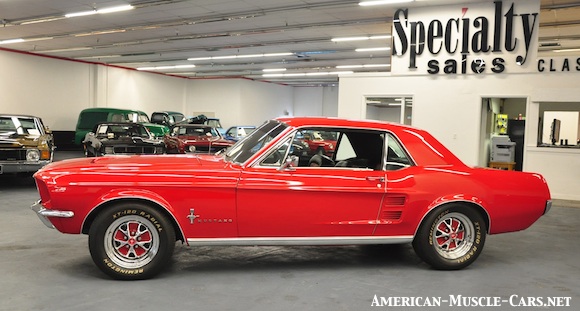
1967 FORD MUSTANG ENGINE OPTIONS
The 200 cubic inch six-cylinder returned as the base engine, mated to a 3-speed full-sychro manual transmission, or a 3-speed Cruise-O-Matic. No 4-speed option was available on the six. The familiar three 289 V8s returned, again with a 2-barrel version producing 200hp, a 4-barrel with 225hp, and the Hi-Po (High Performance) 271hp K-code 289. The K-code was now only available with the GT Equipment Group. The two lower 289s came standard with the 3-speed manual, with the option of 4-speed manual or 3-speed automatic. The 271hp engine came standard with a 4-speed manual, with the option of an automatic.

1967 FORD MUSTANG CHASSIS UPGRADES
Again, the new 1967 Ford Mustang was wider, and had a wider track. The front suspension was completely revised and retuned, and better tires used for better handling. The steering ratio got faster, from 27:1 on the manual steering to 25.3:1, and from 22.0:1 to 20.3:1 with power steering. And for the first time, power brake assist was available with the front disk brake setup. The Mustang was already notorious for understeering, but this was partially addressed with the new changes in suspension geometry. When equipped with the 700 pound big block 390 however, understeering was unavoidable. But for the times, the handling wasn’t all that bad.
1967 FORD MUSTANG 390 ENGINE OPTION
The Camaro could be ordered with a 396 ci big block V8 with up to 375hp, while the Firbeird’s top engine was the 389 with Tri-Power which made 360hp. Ford’s answer was its 390 big block, part of the FE family of engines launched in 1958 and grew to 390 ci in 1961. It was a big, bulky, heavy engine at over 700 pounds, and because of its relatively long stroke, it didn’t like to wind very tight, running out of steam at around 4500 rpm, but it was a real low-end torquer. The carburetor was a 600 cfm Holley 4-barrel. But weak valve springs, a cast iron crank and poor breathing doomed the engine to just-OK performance, but in the lightweight Mustang, it still translated out to 0-60 times in the low-7s. With a 4-speed and lower rear end gears (a numerically higher number), a 390 Mustang could do the quarter mile in about 15 seconds. But, the big blocks extra weight over the front axle changed the handling characteristics for the worse, bringing on more understeer than it already suffered from.

MUSTANG GETS A HANDLING PACKAGE
New for 1967 was an optional Competition Handling Package which cost a lofty $388.53, a hefty price in 1967, which coupled with the fact that it was only available on Mustang GTs, kept its numbers down. But it was a very desirable option, and of great value to collectors today, because of its content and its rarity. It included stiffer springs, heavy duty Gabriel shock absorbers, quick-ratio steering, a larger 15/15” front sway bar, a limited-slip differential with 3.25:a ratio or lower (higher numerically), and 15-inch wheels and tires.
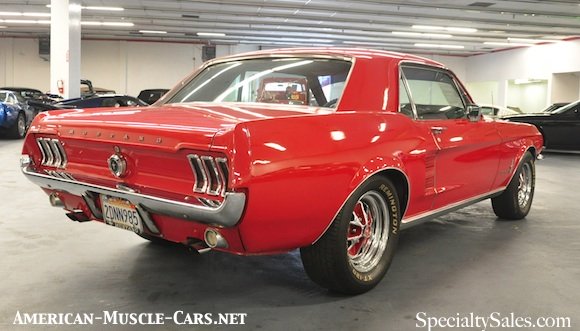
MUSTANG GETS A BIG BLOCK
This new Mustang was also wide, with a wider track, which allowed Ford’s chassis engineers to finally do something about the Mustang’s handling. This also allowed for a larger engine compartment, making big block power possible including the 390 and the 428. This turned out to be fortuitous for Ford, since the Camaro–Firebird twins came with an option for big block power from the onset.
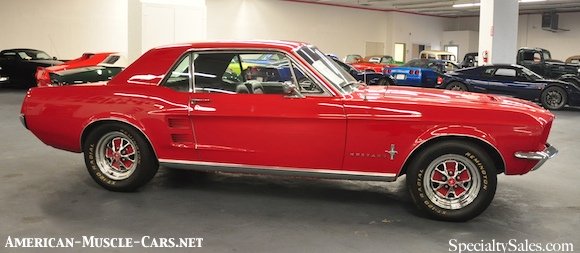
MUSTANG GT PACKAGE
For 1967, the Mustang GT Equipment Group included grille-mounted foglights, power front disk brakes, dual exhaust with chrome tips, rocker panel stripes, special emblems, F70X14 whitewall tires, a GT-specific flip-open gas cap, and from the Competition Handling Package, stiffer springs & shocks and the larger front sway bar. 4-speeds were still known as GTs, but a new model designation was introduced for the automatic-equipped GTs. They were now called GT/A.

EXTERIOR DECOR GROUP
An exterior appearance package became available for the first time called the Exterior Decor Group. It included a new hood with rear-facing louvers in twin faux scoops that also housed the turn signal indicators, visible to the driver through the windshield. Also included were wheelwell mouldings, rear deck mouldings (not on Fastbacks), and a pop-open gas cap.
1967 Ford Mustang CONVERTIBLE

1967 Ford Mustang FASTBACK
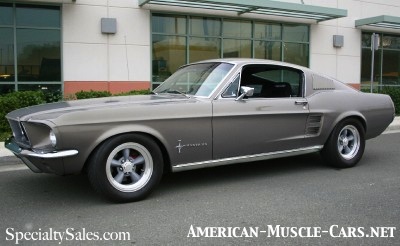
1967 Ford Mustang SHELBY GT350
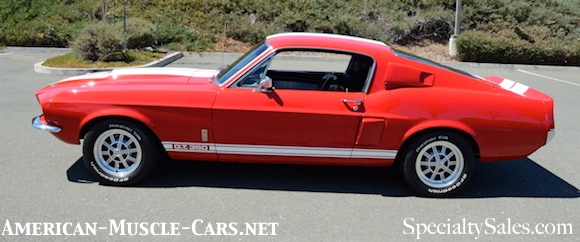
1967 Ford Mustang INTERIORS
1967 Ford Mustang PRODUCTION NUMBERS
| 1967 FORD MUSTANG
2-door Hardtop 2-door Hardtop Luxury 2-door Hardtop w/Bench Seat 2-door Fastback 2-door Fastback Luxury Convertible Convetrible Luxury Convertible w/Bench Seat |
CODE
65A 65B 65C 63A 63B 76A 76B 76C |
QUANTITY PRODUCED
325,853 22,228 8,190 53,651 17,391 38,751 4,848 1,209 Total 472,121 |


